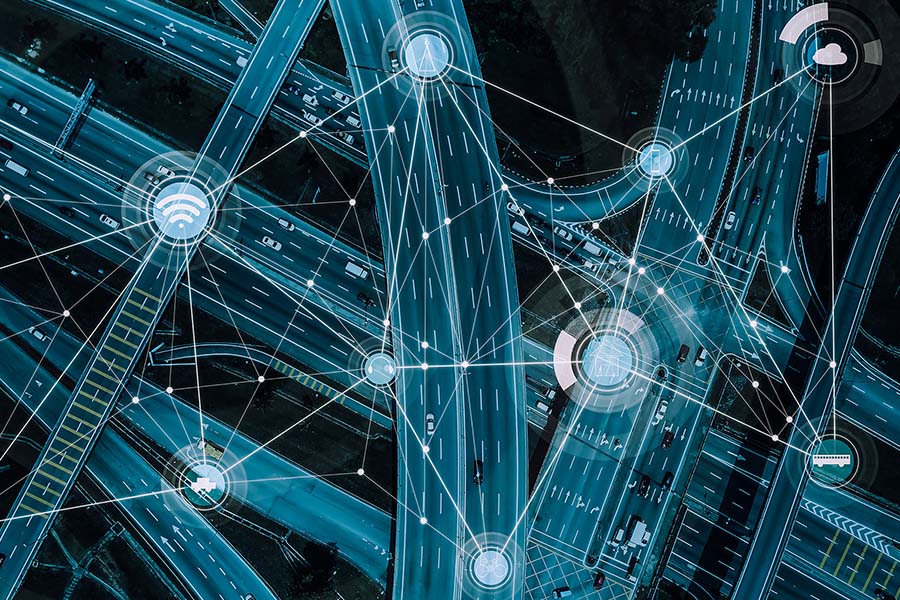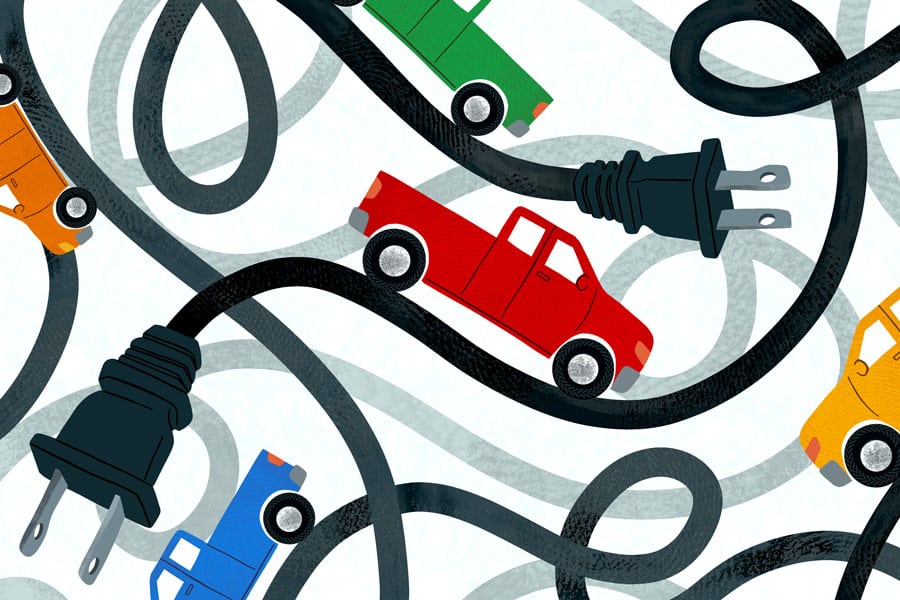At one time, driverless cars were inconceivable. Even the cartoon “Jetsons” had to drive themselves. However, driverless cars are now a question of when, not if. Since fully autonomous vehicles are likely the future, questions such as, “What are the benefits of driverless vehicles?” and “How can they be realized?” must be answered.
The answer to both questions—and a critical development for civil contractors to pay attention to—includes vehicle-to-infrastructure (V2I) technology.
What is V2I?
When driving a vehicle, motorists read and react to everything going on around them. The same is true for driverless cars. That’s where V2I comes in.
V2I is the next generation of intelligent transportation systems (ITS). V2I technology, its proponents say, enables wireless exchange of information and data between individual smart vehicles and road infrastructure. The information is transmitted via a fiber-optic line that connects each element.
Information is gathered from traffic signals, road signs, streetlights, signage, lane markings, etc. Data related to traffic congestion, weather advisories, construction zones, parking availability, streetlights and more can be related.
While many of these benefits can be realized by drivers today, proponents of V2I say they will be essential if driverless cars become mainstream in the future.
Increase in mobility
While Americans may love cars, the top priority for most motorists when driving is getting from point A to point B as quickly and safely as possible. That’s why one of the top priorities of nearly every infrastructure project is increased mobility.
By communicating with drivers—or the car, in the case of driverless cars—regarding the right speed to drive to avoid a red light, V2I increases mobility. It also increases mobility through traffic light cameras and sensors that sense traffic and communicate with one another to synchronize timing. By adjusting the timing of traffic lights based on traffic, cars spend less time waiting at traffic lights.
Vehicles will also be able to navigate roadways more efficiently with V2I technology, proponents say, since data related to traffic congestion will be available. With this information, drivers can take the fastest route. This benefits individual drivers who can spend the minimal time necessary commuting, leaving roads less congested.
Environmental benefits
More than 6 billion gallons of diesel fuel and gas are wasted annually due to idling vehicles, according to the United States Department of Energy. Idling time is reduced with V2I. Since traffic flow will improve, fuel usage will be maximized. A reduction in idling is beneficial for electric cars for similar reasons. The energy will be used more efficiently, meaning less frequent charging and usage of the grid.
ALSO ON BUILT:
The United States Department of Transportation notes: “When signal operations and freeway lane management applications are optimized for the environment, they could yield fuel savings of up to 22%.”
Idling a vehicle is also harmful to the engine. Excessive idling leads to increased maintenance needs and decreases an engine’s lifespan. Shortening the lifespans of the engines, as well as vehicles, requires increased vehicle production, which leads to greater energy usage.
Safety impacts
In the US, car crashes are the leading cause of death for people aged 54 and under. Worldwide, car crashes lead to 1.35 million fatalities a year. Therefore, transportation authorities are always looking for ways to improve vehicle safety, and experts say V2I can increase it in multiple ways.
Accidents often happen because a driver does something that others on the road don’t expect. Predictability and consistency lead to safety. Drivers changing lanes, for instance, have the potential to cause accidents. Therefore, even pavement markings that communicate with vehicles will lead to fewer accidents. Road markings and lane detection can enable vehicles to stay in their lanes rather than drift—due to driver distraction or poor visibility—into other lanes and potentially cause accidents. Changing lanes is safer when there is sufficient space and other vehicles are aware of the movement.
Many accidents occur because drivers miss a sign, but smart signs connected to V2I technology can help eliminate this problem.
Consider a stop sign. When vehicles miss a stop sign, they may crash into a car that had the right of way. V2I technology can help eliminate this problem.
Another scenario is a driver missing a highway sign indicating their desired exit. To not miss the exit, the driver abruptly brakes or changes lanes, leading to an accident. With smart signs connected to V2I, signs will always be visible to humans and machines, regardless of road condition. Improved readability will help drivers react more predictably and reasonably, enabling driverless vehicles to move appropriately and in a way that will not surprise other vehicles on the road.
Pedestrian and cyclist safety will also improve with V2I, proponents say. A smart intersection can detect if someone is crossing. Vehicles approaching the intersection will be alerted to the pedestrian crossing and react appropriately. Smartphones could also be looped into the V2I technology network so pedestrians and cyclists could be alerted about traffic.
For V2I to go from concept to reality, however, governments will have to invest in updating infrastructure from analog to digital. Driverless vehicles will be able to communicate with the road and cars around them. By making this connection a reality, proponents say V2I will improve safety, help the environment and increase mobility.












